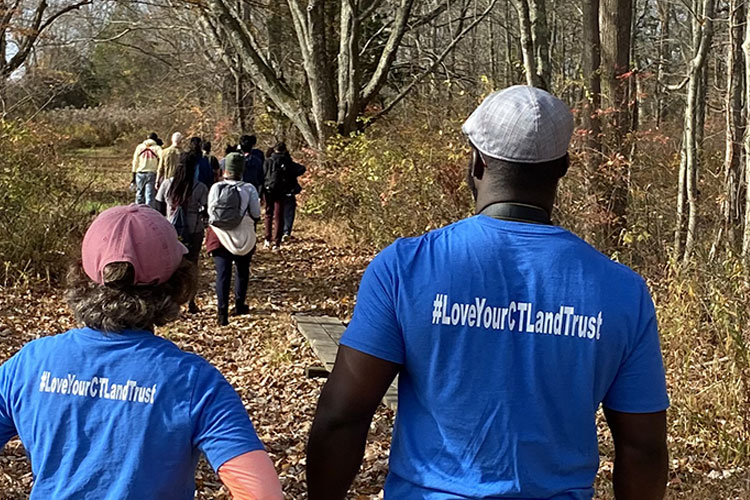Resource Library
This resource was created by the American Farmland Trust and the Connecticut Farmland Trust. This resource provides information on conservation options specifically for Connecticut farmland.
From the The New York Merger and Collaboration Fund
11/5/21 – Writing the Land is a collaborative project between land trusts and artists to help raise awareness for the preservation of land, ecosystems, and biodiversity. The program helps poets “adopt” a conserved property, partnering them with a land trust for the calendar year.
Poets visit the properties and create poems inspired by the land. At the end of the year, the poems are published, with a chapter featuring each participating land trust.
The Connecticut Forest & Park Association (CFPA) has created the CT Forestry Services Directory as a resource for forest landowners. Landowners can find a CT certified professional forester to assist with individual needs.
The Connecticut Department of Energy and Environmental Protection (CT DEEP) is dedicated to environmental justice. The CT DEEP Environmental Justice Program integrates environmental justice principles into its activities. It evaluates its urban initiatives, addresses issues in underprivileged communities, bolsters public decision-making involvement, identifies health concerns with health departments, improves administrative participation, educates on regulations and policies, and reduces language barriers.
Incorporating environmental justice into land conservation means focusing on directing resources to historically underserved communities, using natural systems to lower greenhouse gases and guard against climate change effects. Conservation efforts aim to cool communities during heat waves, reduce air pollution, protect from floods, and foster economic growth, all while addressing the disproportionate impact of climate change on low-income and minority populations.
Inclusive access to nature is vital, ensuring everyone can connect with the outdoors. Resources provided offer guidance on adaptive birding, ADA compliance, and community inclusion strategies, aiming to break barriers and foster equitable enjoyment of natural spaces for people of all abilities. These insights empower organizations to create universally welcoming outdoor experiences.
Diversifying organizations through their boards, staff, and committees is essential for reflecting community diversity and enhancing decision-making. The resources provide insights on inclusive environmental action, outline change processes for racial equity, offer roadmaps to inclusivity, guide on hiring diversely, and discuss barriers to organizational change. These tools help create environments where diverse perspectives are valued and drive forward the mission of land conservation inclusively.
4/21/21 – Attorney Keith Ainsworth leads the discussion on the legal strategies and tools available to land trusts, environmental organizations and landowners seeking to protect, assert and know their rights. This workshop will cover laws and regulations, and will review the broad history of cases that illustrate how Connecticut’s courts have shaped the law. Topics included encroachments, tree law, water and wetlands, liability and risk management, restoration, documentation and participating in the public process. Keith will provide a lightning round presentation on these topics and then open it up to the group for Q&A.
This workshop was originally presented as part of CLCC’s Spring 2021 Conserving Land by Staying Connected Programming.
CLCC’s sign collection includes example signage for land trusts and other conservation and trail organizations. If you have helpful signage to share, please contact Cristina at chayden@ctconservation.org
For additional (non-CT) samples visit WeConservePA’s sign gallery: https://gallery.conservationtools.org
For CT COVID-19 Sample Trails Signage click here.
